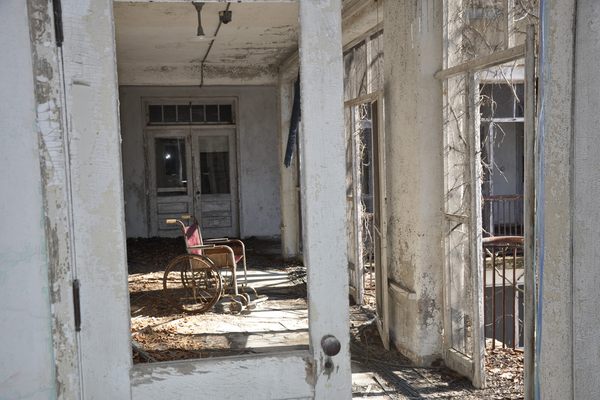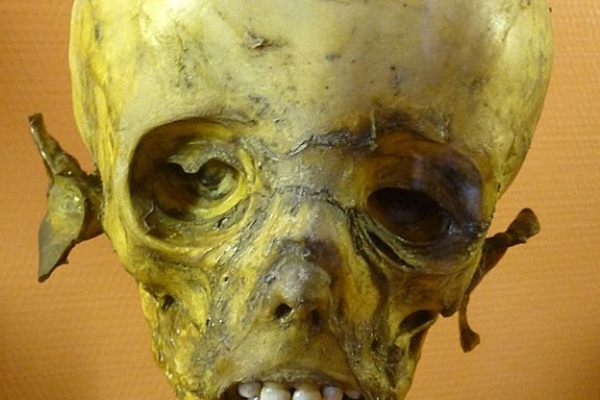About
For the inhabitants of New York City in the gaslight era, there was one name that was guaranteed to chill the heart: Bellevue.
While places like Five Points, Murderer's Row, and the Mulberry Bend were terrifying in their own right, Bellevue Hospital held a particularly dark sway over the city's collective consciousness. A forbidding presence on 1st Avenue and 26th Street, "Bellevue" became a synonym for degradation, foulness, and death; it was the one place a New Yorker didn't want to go, because the chances were you wouldn't come back.
Founded in 1736, Bellevue is America's oldest public hospital. Starting as an almshouse with six beds for the city's poor, the dangers to the public from outbreaks of diphtheria, cholera, and yellow fever saw the need for a place of quarantine. At a time when Manhattan didn't yet extend above Wall Street, the city purchased Belle Vue Farm, located a few miles to the north, in 1798. The hospital was formally named Bellevue in 1824.
While a New York City hospital built on Broadway in 1771 catered to high society, Bellevue soon became a refuge for the city's poorest, mostly the immigrants living in the slums of lower Manhattan. For the 300,000 souls per square mile crammed into the tenements, Bellevue was often their last port of call. In 1879 Harpers New Monthly Magazine ran an article on New York's hospitals. Bellevue was described as being "for the poorest of the poor, the dregs of society, the semi-criminal, starving unwelcome class who suffer and die unrecognized." It was overrun with foundlings (abandoned infants), the mentally ill, alcoholics, victims of epidemics, the homeless, and patients ranging from the suicidal to the homicidal. Overcrowded, sleeping three to a bed, or more often on the floor, conditions were abysmal. In 1876 it was reported that 48 percent of all amputations proved fatal due to "the poison in the walls." Harpers summed up the miserable institution as such: "The wards are filled with wasted souls drifting through the agonies of disease toward unpitied and unremembered deaths."
The alcoholic cells were often merely way stations for a trip to the asylums of Blackwell's (now Roosevelt) Island, lying in sight from Bellevue up the East River. If patients were lucky enough to be cured, as reporter and champion of tenement reform Jacob Riis wrote in his photoessay, How the Other Half Lives, "the maelstrom has no bowels of mercy; and the would-be fugitives are flung back again and again into the devouring whirlpool of crime and poverty, until the end is reached on the dissecting-table, or in the Potter’s Field."
But for all its infamy, Bellevue was also a pioneering hospital. It housed the city's first morgue, and it was the first hospital in America to run a maternity ward. A veteran of the American Civil War, surgeon Colonel Edward Barry Dalton, saw the need to get the wounded to medical aid as quickly as possible. He created a horse-drawn wagon with removable slatted beds in the back, and in doing so invented the first ambulance. Bellevue was also the first hospital to use hypodermic syringes, have a pediatric ward, and contain a specialized unit for outpatients.
In 1912, New York's premier architectural firm McKim, Mead and White designed a new campus for the hospital, which mirrored the increasingly better standard of medical care. Today, Bellevue runs a state-of-the-art, first-rate medical institution. In a gleaming new building that cleverly retains some of the original McKim, Mead & White renovations in the hospital's main lobby, it has built a reputation as one of America's most progressive and renowned hospitals. In the mid-1980s, it was one of the first hospitals to create an AIDS clinic. And true to its origins as a refuge for the unwanted, Bellevue was in the news in 2014 for taking in Craig Spencer, a recovering New York Ebola patient.
But just as the old Bellevue had struck fear into the hearts of 19th century New Yorkers, a building constructed on the hospital grounds in 1931 would do the same in the 20th: the infamous Bellevue psychiatric hospital. Resembling a forbidding Georgian house, the red brick building was located a few blocks to the north of the main hospital on 1st Avenue. This haunting structure, still surrounded by a rusting iron spiked fence and covered in ivy as it was in the 1930s, has inspired horror films, nightmares, and comic books. Long associated with neglect and dubious and disturbing psychiatric practices (the first uses of insulin shock therapy happened here), Bellevue was New York's Bedlam, where its homeless alcoholics and insane were left to be forgotten. The New York Times reported in 1983 that "the Bellevue psychiatrists must try to serve all the disturbed people in New York—the 'jumpers' who threaten to leap from the Empire State Building or the Brooklyn Bridge; the 'slashers' who cut their wrists or chests; people who overdose on narcotic drugs or alcohol, and people who run around without clothes or harass passers-by at Grand Central Station."
This was once home to Mark David Chapman, on the night he shot John Lennon. Edie Sedgwick, Allen Ginsberg, Eugene O'Neill, and William Burroughs all stayed here at one point, as did Norman Mailer on the night he stabbed his wife. In popular culture and the minds of New Yorkers, Bellevue was the end of the road. Billy Wilder's Oscar-winning 1945 picture The Lost Weekend, about the devastating effects of alcoholism, was even set here.
Decades of malpractice and squalor soon caught up with Bellevue. Geraldo Rivera's 1972 ground-breaking expose of the gruesome Willowbrook on Staten Island shone a desperately-needed light on the city's asylums. The psychiatric unit moved into the newer buildings to the south and is now regarded as one of the country's best facilities.
The old Bellevue psychiatric hospital building closed in 1984. Today, it is partially used as a shelter for the homeless, but the imposing building lies mostly empty and abandoned. At night a few lights can be seen behind ragged curtains, where the tireless staff still care for the city's poorest of the poor, just as they did nearly 300 years ago.
Update as of January 2020: Bellevue has reopened as a functioning hospital.
Related Tags
Community Contributors
Added By
Published
November 17, 2014







































































